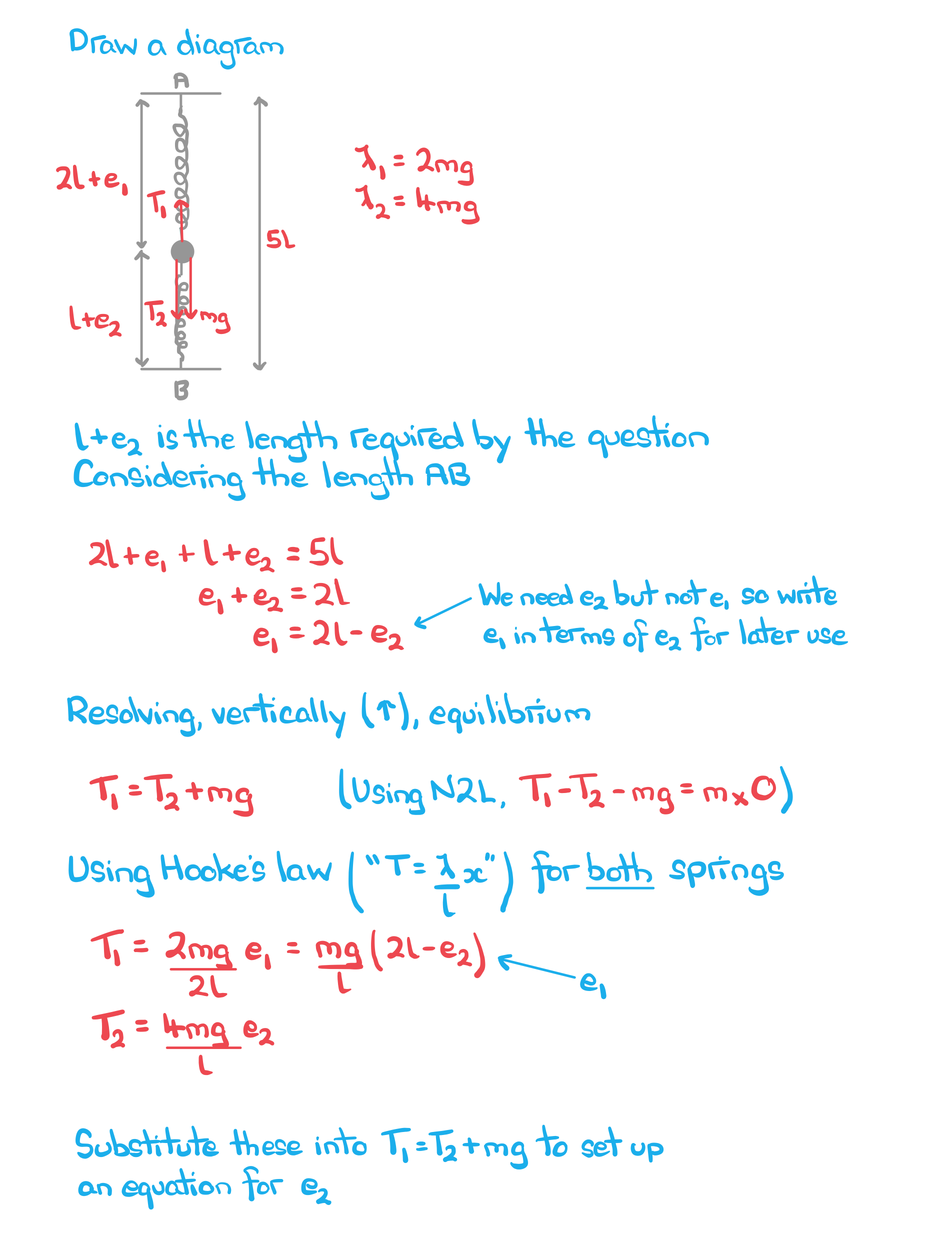Problem Solving with Strings & Springs
What if the particle is fixed between two different springs?
- There will be two different tensions and extensions
- For extensions, you can use
and
- or, in the case of equilibrium extensions,
and
- or, in the case of equilibrium extensions,
- For extensions, you can use
- You will need an extra equation relating
to
, found by summing all the lengths
- e.g. if the total distance is
then
- e.g. if the total distance is
- Springs can go into compression, but if you're not told (or it's not clear), draw both springs under tension
- If it turns out that
or
are negative later on, then you know they were actually under compression
- If it turns out that
- If a particle is attached to the midpoint of a spring, you can either
- Treat the spring as a whole
- The two tensions either side have the form
where
is the total extension
- The two tensions either side have the form
- Or treat the particle as being fixed between two half-springs, halving their lengths (natural lengths and extensions), but keeping the same modulus of elasticity (the material they're made from hasn't changed)
- The two tensions either side have the form
- This simplifies to
(showing that both methods give the same answer)
- The two tensions either side have the form
- Treat the spring as a whole
What if the particle is suspended at angles by two elastic strings?
- A particle of mass
kg has a weight of
N acting downwards
- The particle could be held up (suspended) by two light elastic strings acting at angles to the horizontal
- Label the different tensions
and
- Label the different tensions
- If angles are not given, use the geometry of the situation to find
and
(by trigonometry)
- This helps later for resolving the tensions in Newton's 2nd Law
- If a particle is attached to the midpoint of an elastic string and forms a triangle due to its weight, you can either
- Treat the string as a whole (calculations with full extension and full natural length)
- Or treat the setup as a particle attached to two identical half-strings (each with half the natural length, half the extension, but the same modulus of elasticity)
- In either case, this situation will be symmetric
- If the particle is pulled vertically downwards and released, it will accelerate vertically upwards
What other questions can be asked about springs and strings?
- There are so many different situations that it's impossible to know, but the tools used are the same
- Newton's 2nd Law, Hooke's Law and the Work-Energy Principle
- If the situation has uniform rods suspended by light elastic strings, you may also need to take moments
- Some questions may be more algebraic
- Other questions could have a change halfway through
- e.g. the string breaks and the particle becomes a projectile
Exam Tip
- Using your own subscripts can help to avoid confusing tensions and extensions from situations with multiple strings or springs
Worked example
A light spring of natural length metres and modulus of elasticity
N has one end attached to the point A on a ceiling and its other end attached to a particle of mass
kg suspended vertically beneath A.
A different spring of natural length metres and modulus of elasticity
N has one end attached to the particle and its other end attached to the point B on the floor, where B is a distance of
metres vertically beneath A. The system is in equilibrium.
Find, in terms of , the height of the particle above the floor.



